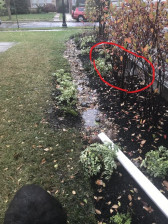Deciding to Build that Rain Garden
When spring is right around the corner, we are looking forward to watching mother nature do her thing once again. To be a part of this process is something we love here at the Spirited Gardener. Feel free to use the following information with your gardening decisions. Enjoy your garden!
Quick Tip:
It takes time for your new garden to fill in as your plants establish and grow. Refer to the Rain Garden Alliance Calculator for guidance on how to properly set up your native rain garden.
For example: There are tricks to making sure your plants have enough room to grow while having a functional and aesthetically pleasing garden. Baptisia will eventually grow to the size of 4 ft, but is planted as a 1 ft plant. While Baptisia is developing, it is best to plant Carex sp. around its base to present the feeling of a complete space, accomplish better infiltration of water into the soil, and as a bonus protects your garden from intruding weeds.
More Facts About Rain Gardens
Lake Michigan's water level had returned to "Normal for the Region" in August 2016, less than two years after a severe shortage of regional water. Experts say that Lake Michigan rose more than 3 feet since January 2013! So as a homeowner, how do you cope with this record level of rainfall while simultaneously preparing your landscape for the drier years that could come cycling back into our region in the future? RainGardens are the perfect answer to this dilemma!
Very local "flooding" problems can create dangerous winter passage on sidewalks or for some chronic wet basements in times of large rain events (2" or more). By grading, directing, infiltrating and allowing for overflow to move in wise ways that water can be managed to utilize "Nature's Free Eco-system Services".

Water is not leaking into
the windowsill anymore due
to a grading correction
and a dry river bed
to move rain to the
rain garden.





